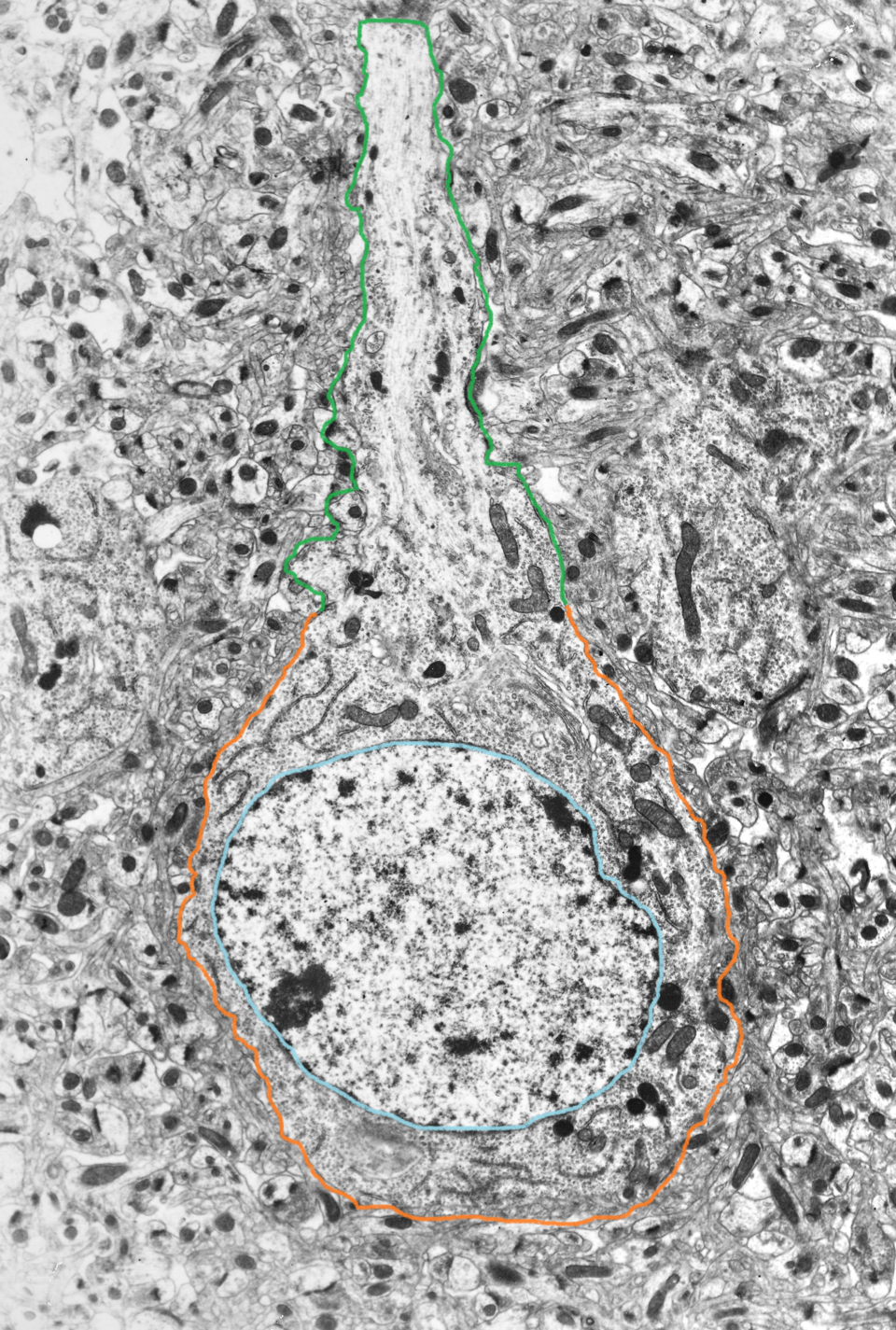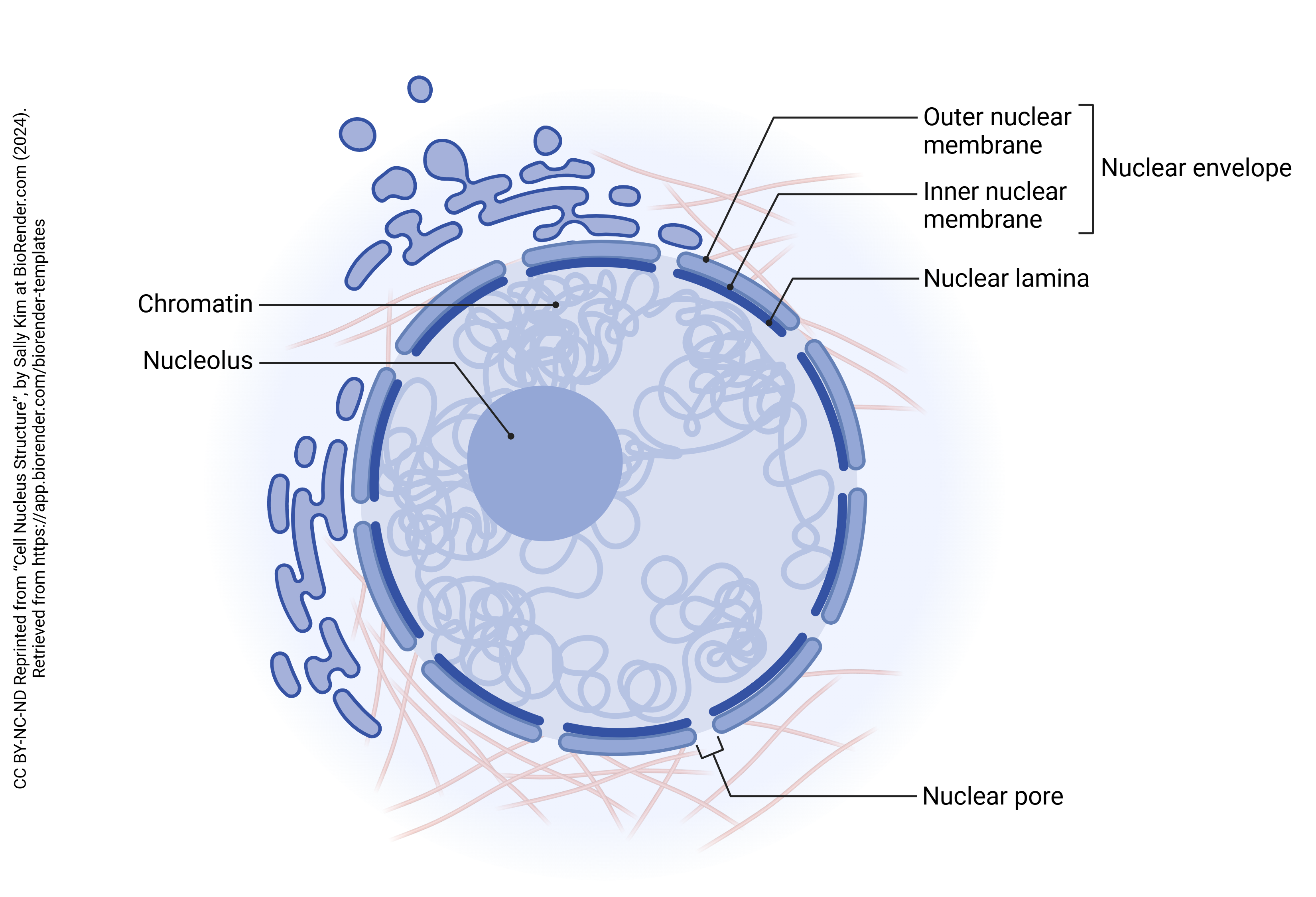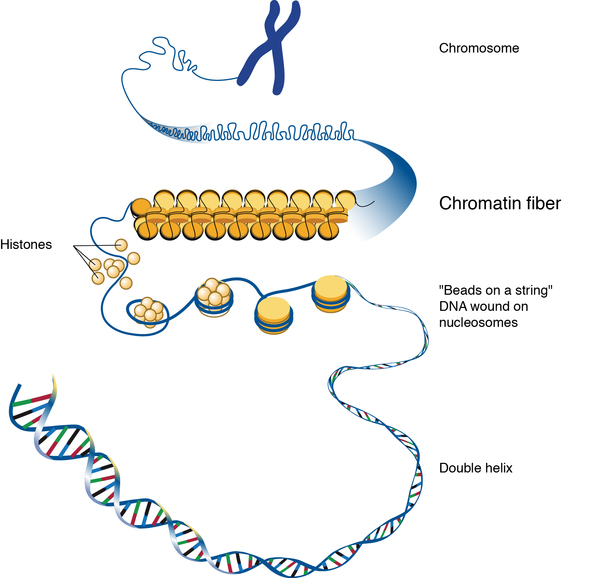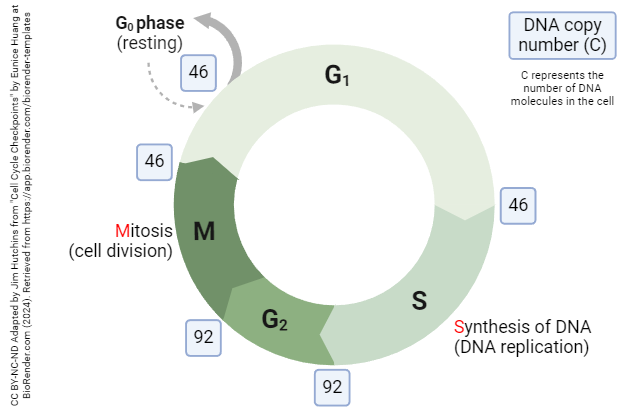The Nucleus of Neurons
Benson Bush and Jim Hutchins
Chapter under construction. This is the first draft. If you have questions, or want to help in the writing or editing process, please contact hutchins.jim@gmail.com.
The Nucleus

The nucleus is an organelle located in the center of the neuronal cell body, or soma. Its purpose is to house the genetic information used in the development and maintenance of the cell. Transcription, the conversion of DNA to its RNA form (a primary transcript), followed by editing of the primary transcript into messenger RNA, occurs here.

The nucleus is surrounded by a nuclear envelope. This is made up of the outer nuclear membrane, inner nuclear membrane, and nuclear lamina. The nuclear envelope is continuous with the endoplasmic reticulum, which is the organelle involved in the process of protein synthesis.

Within the envelope and suspended in nucleoplasm are coils chromatin, which is made up of strands of DNA wrapped around histones. Chromatin can be categorized into two types: heterochromatin and euchromatin. Heterochromatin is very condensed with little to no important genes that aren’t activated as often for transcription, while euchromatin is less condensed and contains more useful genes that are transcribed often (Tamaru, 2018).
Nestled in the center of the nucleus is the nucleolus which is a crucial site for neuronal development and long-term maintenance of stress responses in mature neurons through the production and assembly of ribosomes to be sent out to the cytoplasm through nuclear pores (Fawcett, 1917; Hetman & Pietrzak, 2012). Dysfunction here may be linked to disrupted neurodevelopment leading to apoptosis or neurodegeneration in diseases like Alzheimer’s due to the slowing of ribosome biogenesis, which will lead to less ribosome transcription happening, decreasing protein synthesis over time.
[amplify on histones and methylation?]
The Cell Cycle

Cellular replication occurs in the cell in a cyclic pattern across the cell’s lifetime (Alberts et al., 2002). The stages of this cycle are G1, S, G2, and M. The G1 stage, or the first “gap” stage, is where cells begin the process of cell replication by doubling the amount of proteins and organelles to get ready for cell division. Then, in the S stage, or synthesis stage of the cell cycle, synthesis of DNA occurs where DNA is replicated. Following the S stage, the second gap stage, G2, provides a similar time period as G1 for cells to continue synthesizing new proteins and organelles. Finally, the cell will divide at the M stage, or mitosis, and the process begins anew. If conditions are not favorable for cell reproduction, it may take longer to enter G1 again after dividing in the M stage. If this occurs, they enter G0, or a resting phase. Specific types of cells, such as neurons, do not typically replicate, so they are permanently in the G0 phase, or resting phase.
Lack of Replication in Neurons
(under construction)
- Neurons do not replicate, use information from Sotnikov et al. 2010 paper
- Neuron development stops at G0
- Possibly replicate?
- Hippocampal neurogenesis
- Stem cell research information here
- https://www.proquest.com/docview/207550201?pq-origsite=gscholar&fromopenview=true&sourcetype=Scholarly%20Journals
Media Attributions
- The_nerve_cell © Dr. Kristen M. Harris is licensed under a CC BY (Attribution) license
- Cell Nucleus Structure © Sally Kim is licensed under a CC BY-NC-ND (Attribution NonCommercial NoDerivatives) license
- Chromatin © Darryl Leja, NHGRI is licensed under a Public Domain license
- Cell Cycle Mitosis © Huang, Eunice adapted by Jim Hutchins is licensed under a CC BY-NC-ND (Attribution NonCommercial NoDerivatives) license
Located inside the nucleus of the cell, it aids in the development and maintenance of neurons through the production and release of ribosomes to be sent out of nuclear pores.
Locations around the nucleus where information can be transferred to and from the surrounding cytoplasm.

